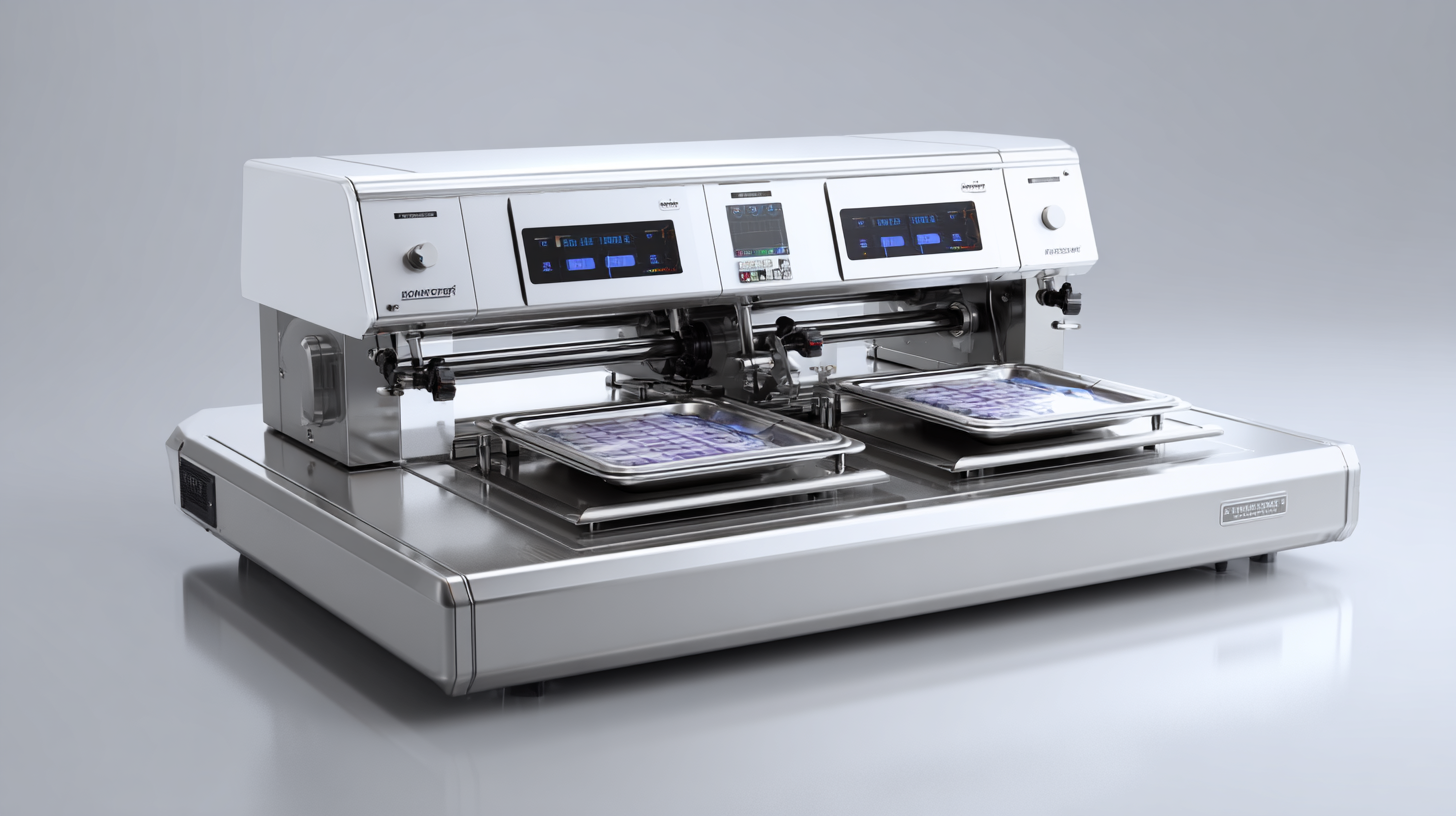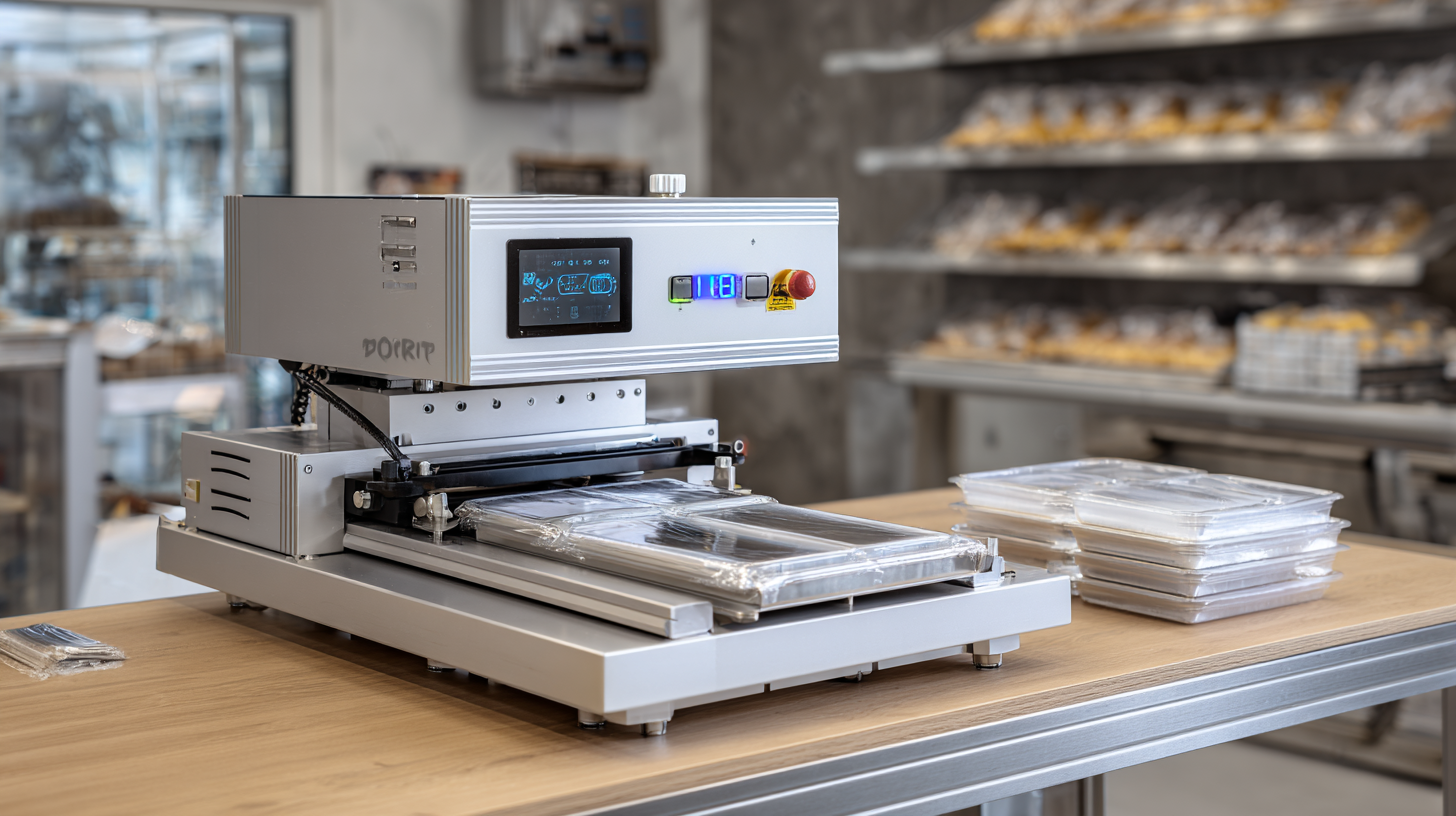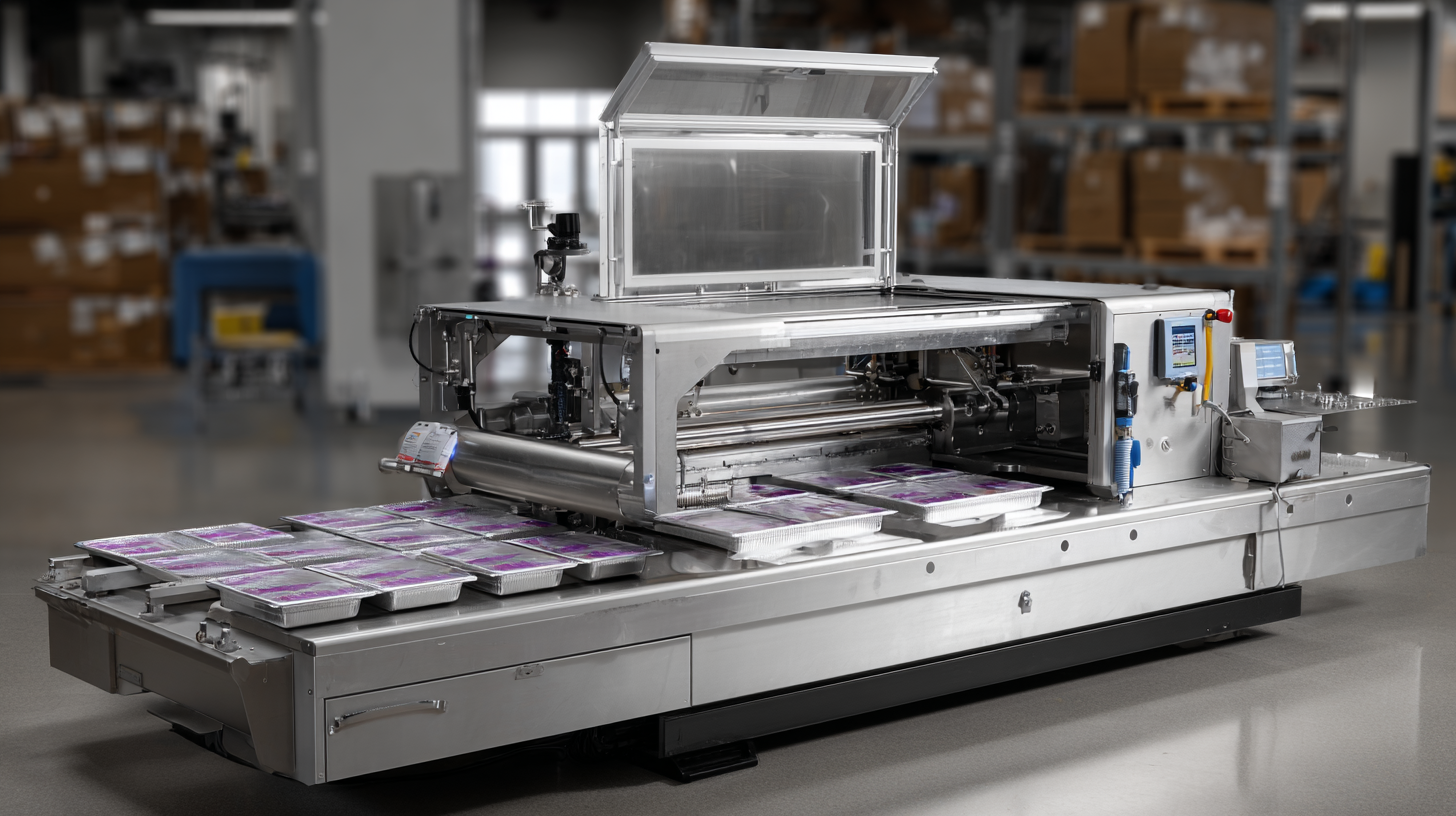Ultimate Guide to Choosing the Best Food Tray Sealing Machine for Your Business
The food packaging industry has undergone significant transformations in recent years, with the global food tray sealing machine market projected to reach USD 500 million by 2025, according to recent market research reports. As businesses strive to improve product freshness and extend shelf life, selecting the right food tray sealing machine becomes critical. With a growing emphasis on sustainability and compliance with stringent food safety regulations—particularly in import and export certifications—understanding the features and capabilities of these machines is essential for companies aiming to thrive in a competitive landscape. Whether you are a startup in the food industry or an established player looking to upgrade your packaging line, this ultimate guide will help you navigate the complexities of choosing the best food tray sealing machine tailored to your business needs.

Choosing the Right Food Tray Sealing Machine: Key Factors to Consider
When choosing the right food tray sealing machine for your business, several key factors must be considered to maximize efficiency and product quality. One primary factor is the machine’s sealing speed and capacity. For instance, newer models can produce up to 60 sealed trays per minute, which significantly enhances workflow in high-demand environments. Such high-speed operation is essential as the global market for vacuum packing machines is projected to grow from USD 4.9 billion in 2024, with an anticipated CAGR of 5.1% through 2034. This increase is driven by the rising demand for efficient food preservation methods, highlighting the importance of investing in advanced tray sealing technology.
Another critical consideration is the machine's adaptability to various packaging formats. Machines that can handle multiple types of trays, such as modified atmosphere packaging (MAP) and skin packaging, provide businesses with the flexibility to meet diverse customer requirements. The ability to switch between formats quickly—often in under five minutes—ensures minimal downtime and maximizes productivity. Moreover, innovations in sustainable packaging materials, such as bioplastics, are becoming increasingly important. Manufacturers are now focusing on integrating these advanced materials in their packaging solutions, reflecting the growing trend toward more environmentally friendly food packaging practices.
Understanding Different Types of Food Tray Sealing Machines and Their Applications
When selecting a food tray sealing machine for your business, it’s essential to understand the various types available and their specific applications. Food tray sealing machines typically fall into three main categories: manual, semi-automatic, and fully automatic. Manual machines are suitable for small businesses or startup kitchens, where flexibility and lower investment costs are crucial. They allow operators to seal trays by hand, making them ideal for low-volume production but may require more labor input.

On the other hand, semi-automatic and fully automatic machines are designed for higher efficiency and productivity. Semi-automatic machines combine manual loading with automatic sealing, streamlining the process while still providing some level of operator supervision. In contrast, fully automatic machines take this a step further by handling both loading and sealing without human intervention, making them perfect for large-scale operations. Understanding these differences will help you choose a machine that not only fits your production needs but also enhances the overall efficiency of your food packaging process.
Impact of Tray Sealing Technology on Food Preservation and Shelf Life
In the world of food preservation, tray sealing technology plays a crucial role in extending the shelf life of products while maintaining their quality. This innovative method involves sealing food items in trays with a protective film, effectively reducing the exposure to air and environmental contaminants. By creating a vacuum seal, tray sealing machines help inhibit the growth of bacteria and spoilage organisms, making them an essential investment for businesses aiming to enhance their food preservation processes.
The impact of this technology on shelf life cannot be underestimated. Many food businesses have reported significant improvements in product longevity, allowing them to minimize waste and optimize inventory management. With the right tray sealing machine, companies can package a variety of products—from fresh produce to ready meals—ensuring that flavors, nutrients, and textures remain intact for extended periods. By prioritizing high-quality sealing methods, businesses not only provide better quality products to their customers but also promote sustainability through reduced food waste.
Ultimate Guide to Choosing the Best Food Tray Sealing Machine for Your Business - Impact of Tray Sealing Technology on Food Preservation and Shelf Life
| Feature | Description | Impact on Preservation | Typical Price Range |
|---|---|---|---|
| Sealing Method | Heat sealing, cold sealing, or vacuum sealing | Determines the level of air removal and moisture retention | $1,500 - $10,000 |
| Material Compatibility | Works with plastic, paperboard, or aluminum trays | Ensures proper sealing and extends shelf life | $2,000 - $15,000 |
| Production Speed | Trays per minute (TPM) | Higher speeds improve efficiency and reduce costs | $5,000 - $25,000 |
| Automation Level | Manual, semi-automatic, or fully automatic | Higher automation minimizes human error and increases productivity | $3,000 - $30,000 |
| Energy Efficiency | Low energy consumption models | Reduces operational costs and environmental impact | $1,000 - $8,000 |
| Maintenance Requirements | Frequency and types of maintenance needed | Influences downtime and operational efficiency | $500 - $5,000/year |
Evaluating Cost-Effectiveness: Price vs. Quality in Food Tray Sealers
When evaluating food tray sealing machines for your business, the delicate balance between cost and quality becomes paramount. A lower-priced model may seem appealing at first, but hidden expenses related to repairs, maintenance, and inefficiency can quickly add up. Investing in a high-quality machine often leads to greater operational efficiency and a longer lifespan, ultimately providing better value in the long run. It's essential to consider the total cost of ownership rather than just the initial purchase price.
Moreover, the quality of the food tray sealer directly impacts product integrity and customer satisfaction. Machines that seal trays effectively not only reduce waste but also enhance the presentation and longevity of the food products. Aspects such as sealing speed, reliability, and ease of use should be evaluated alongside pricing. Choosing a machine that excels in these areas can reduce downtime and enhance productivity, making it a worthy investment for businesses striving for excellence in food packaging. Ultimately, weighing the cost against the quality will lead to a more informed decision that aligns with your business goals.
Industry Trends: Innovations and Eco-Friendly Solutions in Food Tray Sealing Machines
As the food packaging industry evolves, the push for innovation and sustainability drives advancements in food tray sealing machines. Manufacturers are increasingly focusing on eco-friendly solutions that not only reduce waste but also enhance product preservation. As consumers become more environmentally conscious, businesses must adapt to these trends by investing in machines that utilize recyclable materials and energy-efficient technologies.

When choosing the right food tray sealing machine, consider investing in models equipped with the latest technologies that promote sustainable practices. Look for machines that offer adjustable sealing temperatures and times, allowing for customizable settings that minimize energy waste. Additionally, opting for machines made with durable, easily recyclable materials can significantly decrease your business’s ecological footprint while ensuring product integrity is maintained.
Tip: Always stay updated on industry regulations regarding packaging materials to ensure compliance and avoid costly fines. Another critical aspect to consider is the usability of the machine; choose one with user-friendly features to streamline your packaging process, potentially enhancing efficiency and reducing labor costs.